Lecture 2 from my GenAI Models and Robotic Applications course.
Encoder
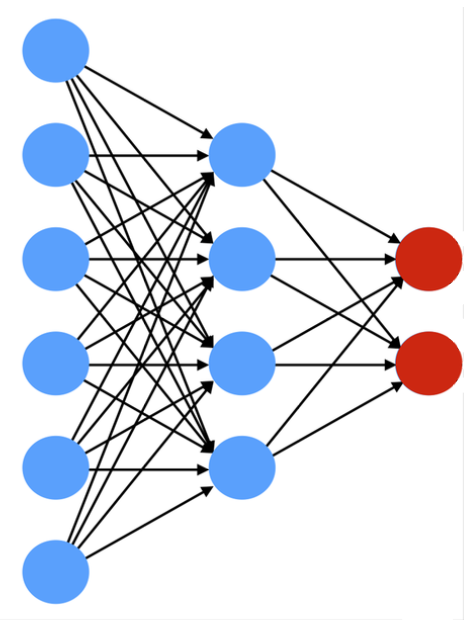
- From high dimensions to low dimensions
- A function that encodes an input sample into a lower-dimensional code
- Fully-connected
- Convolutional
- Sparse
Decoder
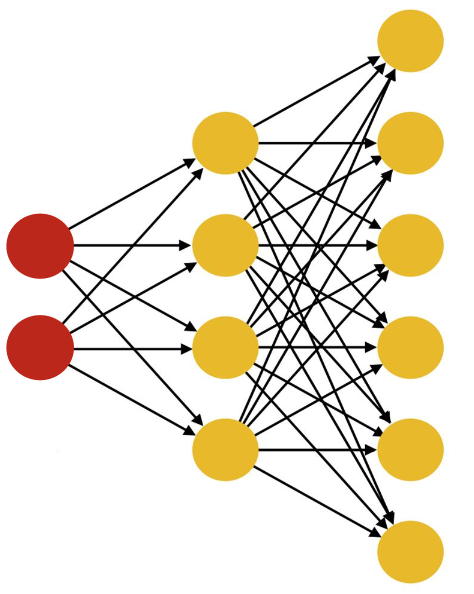
- From low dimensional space to higher dimensional space
- A function that encodes an input sample into a higher-dimensional code
- Fully-connected
- Convolutional
- Sparse
- Convolutional decoders perform transposed convolutions or upsampling and convolutions to reverse the downsampling of the decoder.
Autoencoder (AE)
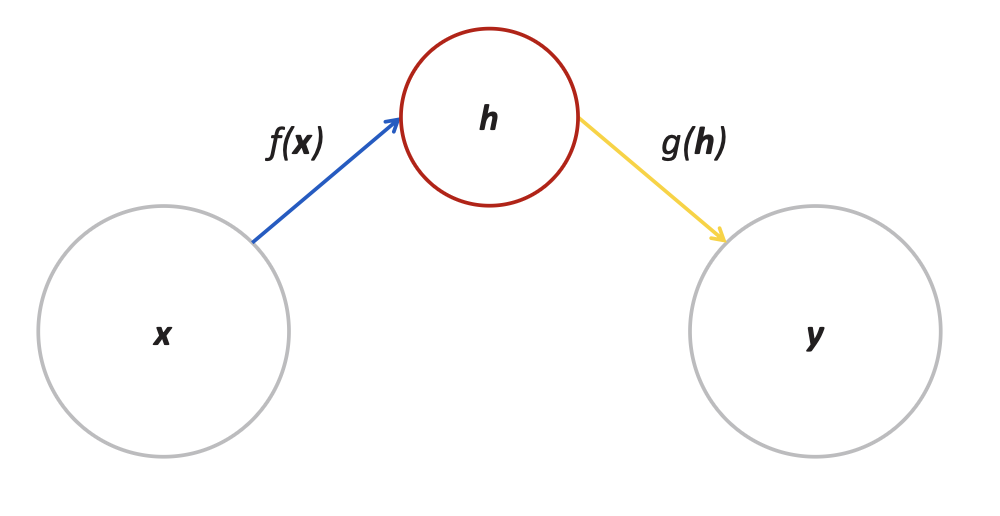
- f(x) is the encoding function
- g(h) is the decoding function
- h is the latent space. Here we can use it to learn more about the information (extraction and probably compression or even manipulating this data e.g. features for classification)
- the learning process is described as minimizing a loss function
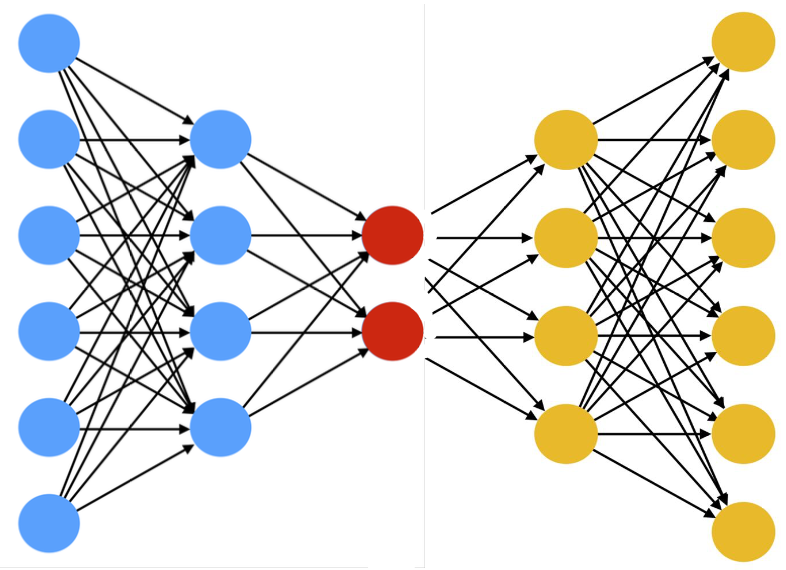
- A neural network with the task of copying the input to the output (difference between x and g(f(h)) is 0)
- Trained to minimize the dissimilarity between the original input sample(s) and the reconstructed output
- Convolutional decoders perform transposed convolutions or upsampling and convolutions to reverse the downsampling of the decoder.
it’s a way to learn features in an unsupervised way.

Visualizing the latent space of an AE
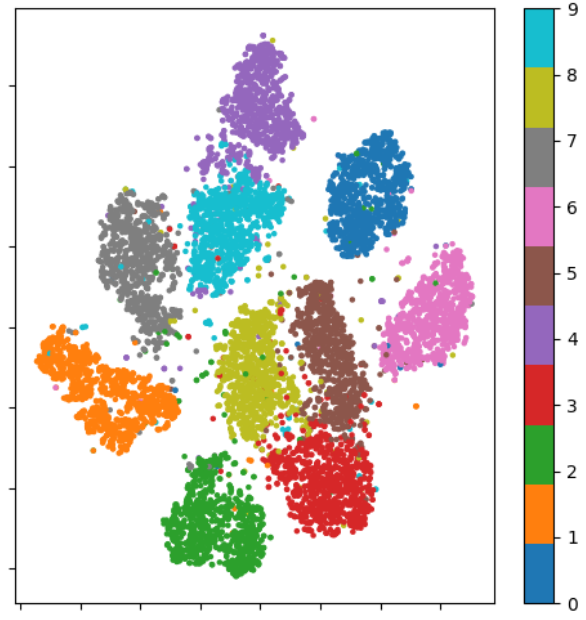
- An AE maps the input samples to points into the latent space, building large mutually independent clusters (no relations between the 'neighbor' clusters)
- The mapping is optimized to reconstruct the input samples only.
Problems
- When the hidden layer h has the same dimension as input x, the network can cheat by just copying the input. If the encoder/decoder are too large, they memorize training samples instead of learning meaningful patterns.
Solution: Undercomplete Autoencoders
Undercomplete AutoEncoders
- The hidden layer h is deliberately smaller than the input x (|h| << |x|). This forces the network to compress the input, learning only the most important features for the training distribution.
- Main Application: Dimensionality Reduction
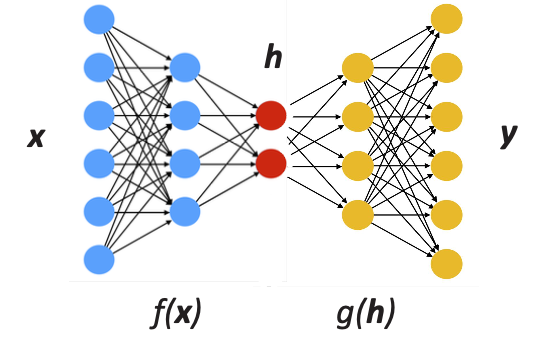
- Benefits: Prevents trivial identity learning, creates useful compressed representations,
- Limitation: The learned features are optimized for the training distribution and may not generalize to diverse inputs,
- The encoder and decoder must have limited capacity. If they're too powerful (even with a 1D bottleneck), the decoder can still memorize by mapping each training example to a unique integer index, defeating the purpose of compression.
Denoising AutoEncoders (DAE)
- Trained to remove noise from the image. DAEs are trained to take a (partially) corrupted input and recover the original undistorted input.
- We take the input(x), we corrupt it with noise(x’) and it becomes the input for the encoder. Train by minimizing the MSE loss between original and reconstructed samples.
- DAE learns features that catch important structures in the input distribution of the training data.

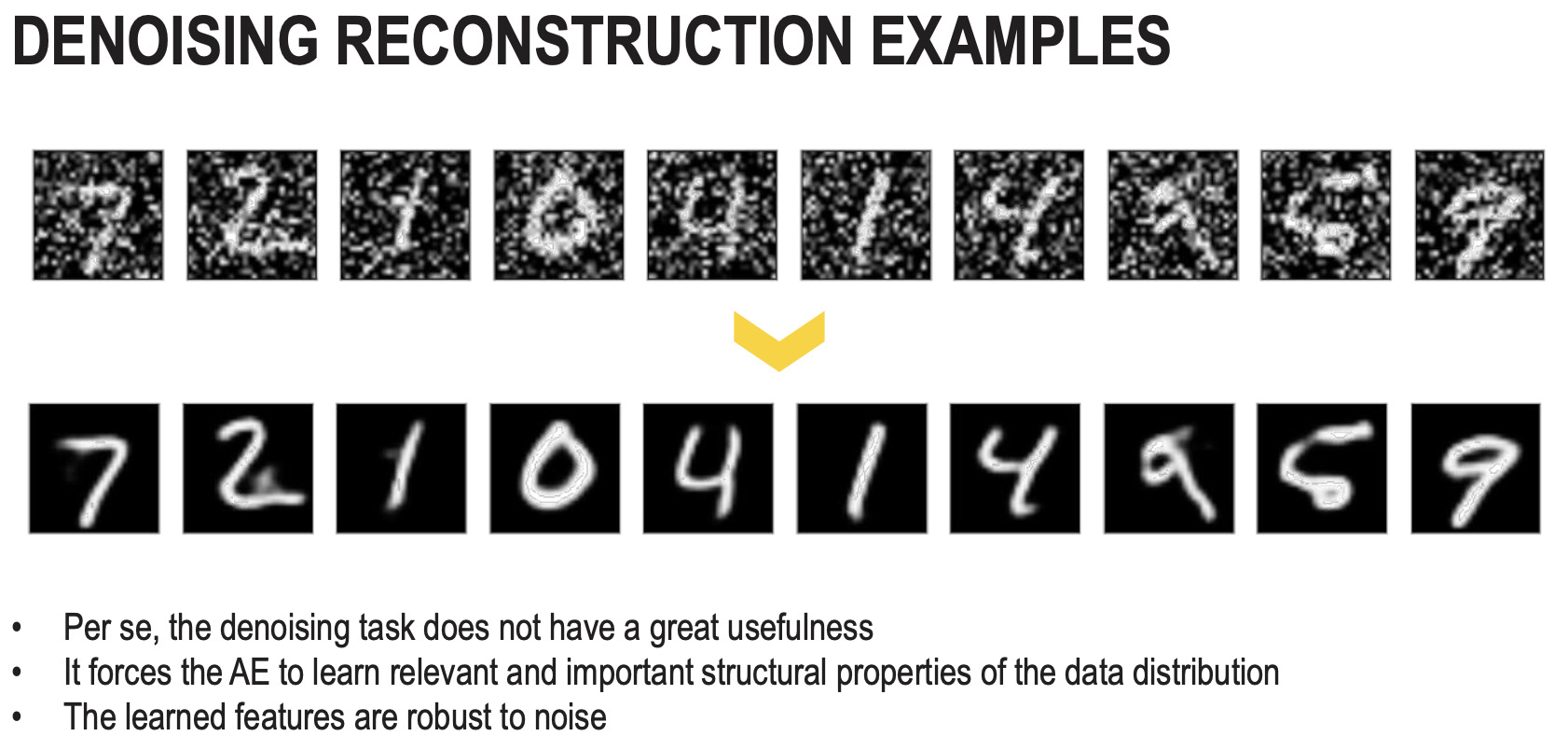
Variational AutoEncoders (VAE)
- Based on variational inference theory
- Enforces the learning of a regularized latent space (with a probabilistic twist)
- Does not encode inputs as points, but as a distribution over the latent space.
- The latent code is sampled from the learned distribution
- The decoder reconstructs the sampled distribution points
The mean and standard deviation are now in high dimensional space (variance is the covariance matrix and the mean is also a matrix).
- E[] is the entropy loss.
- is a measure of difference between distributions.
- Aim is to reconstruct the input accurately and enforcing a known distribution to the latent space
Sampling does not flow back (Backpropagation through randomness is not possible). That’s why we have to do a reparametrization trick: Separate the randomness from the learnable (and differentiable) parameters , where , instead of


VAE vs AE: latent space
- In the AE latent space, the clusters are not correlated in any way. It’s just a visualization.
- In the VAE latent space, the clusters are correlated through the prior. The KL divergence term pushes all encodings toward , which:
- centers all clusters around the origin
- Keeps variance controlled
- Forces the network to use the latent space efficiently
- Creates semantic relationships — similar digits tend to be closer because they share similar distributions that get pulled toward the same region of the prior. For example, digits 4 and 9 will always sit close to each other when semantic relationships matters.

Generation with VAE
- The latent space is encoded as a (Gaussian) distribution.
- Sampling a latent variable ( from ) and let the decoder generate (reconstruct) an image. VAE produces recognizable digits while AE generates blurry/unclear outputs when sampling randomly.

Latent Space Arithmetic
- Interpolation: Encode two samples (e.g. digit ‘2’ and ‘4’), compute and , then interpolate: where and .
- This results in smooth morphing between digits (2 4) for VAE. In the AE case, we have abrupt jumps with artifacts — the irregular latent space means intermediate points don’t decode meaningfully.
Attribute Manipulation
- Compute mean latent vectors for each attribute cluster
- Calculate attribute direction vectors in latent space
- Add/subtract these vectors to/from an encoded image
Some examples include prompts like “make blonde” or “add glasses” which add or substract the respective vector.

Generative Adversarial Networks (GANS)
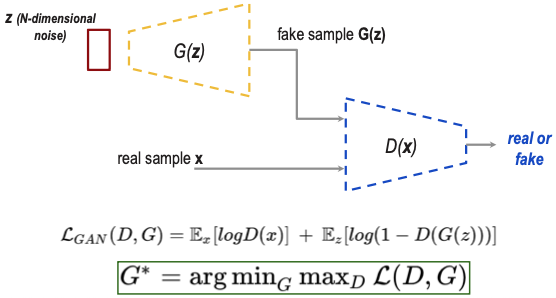
- GANs are generative models based on game theory,
- A generator network G generates fake samples,
- A discriminator network D discriminates between real samples and fake generated samples.
Adversarial Training
- The two networks compete in a game:
- G minimizes: Makes , fooling the discriminator
- D maximizes: Correctly identifying real () and fake ()
Conditional GANS (cGANS)
Conditional GANs
- Learning a generator G to reconstruct meaningful samples only from noise z can cause mode collapse(G generates few samples only, D is in a local minimum). Mode collapse means that the training of the network is stuck.
- The solution implies conditioning: Both G and D receive an additional input c (condition) such as a class label, text description, or another image. This guides generation toward specific outputs.
The loss function stays the same but we take c into consideration.
- Generator: — takes noise and condition
- Discriminator: — evaluates if is real given condition .
One condition for cGANs in computer vision: ALLIGNMENT (or PAIRED) (the objects are always in the same place). cGANs excel at paired image translation tasks.
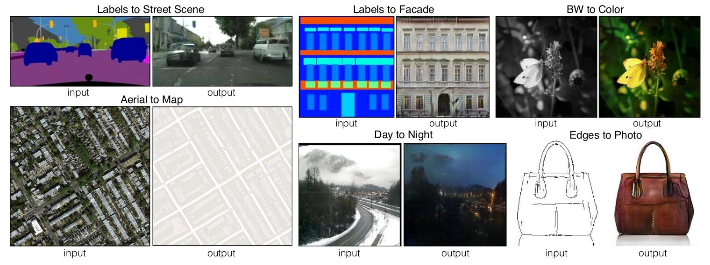
Cycle GANS
- Cycle GANs perform unpaired image-to-image translation: given two unpaired image sets (domains) X and Y, learn a mapping function between the two domains that transforms images from X into images from Y (and vice versa).
- Based on the concept of cycle consistency.
- Paired training samples are difficult to obtain (and scarce).
